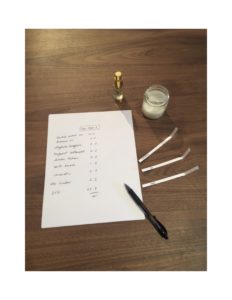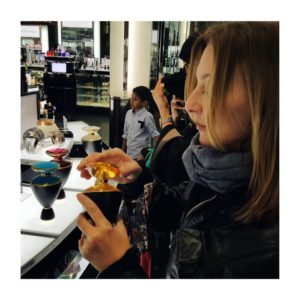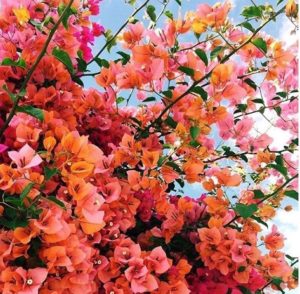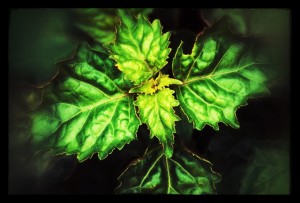
Notes from The Lab via Sherri
In last month’s edition of Notes from the Lab, I discussed common Fragrance myths. This month, I’d like to offer additional insight on a few more misconceptions about the Industry:

Sherri Sebastian on a sniffing trip at Harrods London
A “good nose” is all it takes to become a perfumer: While it’s true that having a keen sense of smell is mandatory for becoming a perfumer, it’s only part of what’s needed to be a perfumer. Like many crafts, nothing replaces experience and practice, and this is especially true of perfumery.

Flowers via Instagram @sherri_sebastian
An apprentice perfumer first studies patterns in nature, to learn the ratios of ingredients that differentiate a rose from say, a jasmine or lily of the valley. Eventually, this knowledge is integrated into the vast scent memory that a perfumer must draw upon throughout their career. While someone might smell a rose and easily identify its unique scent profile, a trained perfumer becomes a sort of “scent detective,” deciphering the clues (notes) along the way…”hmm, I smell phenyl ethyl alcohol, geraniol, citronellol…this must be a rose!” To be clear, I don't think you need to work in the "Industry" to be a perfumer; I do believe a long term dedictaed practice is neccessary.

via shutterstock
Fragrance formulas are secret: In a world where everyone’s a few Google searches away from becoming an “expert” in just about anything, fragrance formulations have lost their proprietary edge. Thanks to the gas chromatogram and mass spectrometer, just about any fragrance on the market can be and is decoded and replicated on a regular basis.

Perfume Samples in line for Analysis
Although this sophisticated and sensitive analytical equipment is a great tool for quality control and understanding natural materials, it’s increasingly used to replace the time, observation, experience and effort involved with traditional fragrance creation by an experienced perfumer. Fragrance houses are sometimes blamed for a lack of creativity, falling back on duplications, but they wouldn’t do this if brands didn’t request this or had more of a direct collaborative relationship with industry perfumers. If there’s any secret, it is that many fragrances on the market today at the request of brands—from mass to niche—are simply “twists” of existing fragrances.

Patchouli by Michelyn
Perfume "extraits" are more concentrated than other forms of fragrances: While this is mostly true, with "extraits" claiming to have over 30% fragrance oil, it's not always the case. Since there are no rules regulating concentrations of fragrance oil used in finished products, creative liberties are often exercised when defining a fine fragrance. Many fragrance ingredients are exponentially more powerful than others, which means you have to use less to achieve the same level of projection as others. At some point, higher concentration of a strong ingredient doesn't yield a longer lasting impact. Imagine a powehouse note like patchouli used in high concentration in a cologne vs. an extrait.Therefore, it’s the perceived strength that often comes into play more than the literal concentrations when determining an appropriate descriptor.
–Sherri Sebastian, Contributing Editor
What surprised you in Sherri's article?
Sherri Sebastian is a professional and independent perfumer working in Los Angeles, you can visit her website here. She holds a seat on the board of directors for the American Society of Perfumers www.perfumers.org Her new collection Provision provisionscents.com is available at stockists nationwide including Indigo Perfumery in Cleveland
